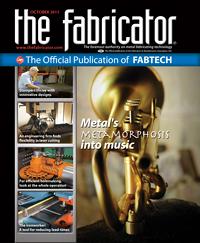Contributing Writer
- FMA
- The Fabricator
- FABTECH
- Canadian Metalworking
Categories
- Additive Manufacturing
- Aluminum Welding
- Arc Welding
- Assembly and Joining
- Automation and Robotics
- Bending and Forming
- Consumables
- Cutting and Weld Prep
- Electric Vehicles
- En Español
- Finishing
- Hydroforming
- Laser Cutting
- Laser Welding
- Machining
- Manufacturing Software
- Materials Handling
- Metals/Materials
- Oxyfuel Cutting
- Plasma Cutting
- Power Tools
- Punching and Other Holemaking
- Roll Forming
- Safety
- Sawing
- Shearing
- Shop Management
- Testing and Measuring
- Tube and Pipe Fabrication
- Tube and Pipe Production
- Waterjet Cutting
Industry Directory
Webcasts
Podcasts
FAB 40
Advertise
Subscribe
Account Login
Search
Stampers' unique perspectives result in innovative designs
Savvy metal formers see an opportunity to become more valuable suppliers to cost-conscious customers
- By Greg Farnum
- October 20, 2011
- Article
- Bending and Forming
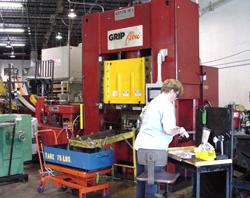
Figure 1: The GRIPflow process is sometimes used to form gears and parts that require close flatness tolerances or a square cut edge. Photo courtesy of EBway Corp.
How do smart companies make money in difficult times? By getting smarter. At least that’s the gospel preached by some of today’s metal formers that are aggressively marketing not only their prices and capacity, but their design and manufacturing expertise as well.
Some of them are finding new customers—and new life—at the same time.
A Better Way
One example is EBway, Corp., Fort Lauderdale, Fla., a stamper that refused to retreat in the face of hard times.
“As a company,” said Terry Walker, EBway’s president, “we’ve seen time and time again that maximizing our strengths through innovation and intelligent risk-taking can pay off.”
Walker pointed with pride to the company’s GRIPflow® stamping technology, one of its earlier success stories. The founder of this 50-year-old firm, Edward Bennett, was looking for an alternative to fineblanking, a stamping process that eliminates the fracture zone when shearing. During the blanking process, the sheet is firmly clamped down and is sandwiched between the die and the underlying plate. Inside the tool, an upper and lower punch extract the blank. This process permits very tight tolerances and can eliminate secondary operations, such as grinding and milling.
The downside to fineblanking is that it is more expensive than conventional stamping, can be used only with a limited range of workpiece thicknesses, and requires a specialized press. Bennett’s goal was to get some of the same results with a less specialized, more robust, and more economical method. He called the process he came up with GRIPflow (see Figure 1).
Unlike fineblanking, which requires an impingement ring in the die and the use of a special fineblank press to produce the stampings, the GRIPflow process does not require an impingement ring. The press can use its full blanking tonnage, whereas a fineblanking press may use only 60 percent of its blanking tonnage. Also, the punch actually enters the die and slugs pass through the die, as it would in a conventional die. A modified conventional punch press is used to run production, and this press can accommodate either GRIPflow tooling or conventional tooling.
That type of out-of-the-box thinking is still alive at EBway and was evident in a recent job where it tackled the problem of die roll. Die roll on stampings is a natural phenomenon of the metal stamping process that engineers and press operators have wrestled with for ages. Stampers recognize die roll as the slightly curved contour on the edge of one side of a blanked part, opposite the burr side. The pull-down on the raw material before the actual cutting starts creates the die roll.
For a variety of reasons, designers, engineers, and end users of stamped parts often try to reduce or eliminate die roll. This is where EBway stepped in with its metal forming expertise.
“We received an RFQ from a potential customer that requested we reduce the die roll around some holes in a new part,” Walker recalled. “Upon further discussion with the customer it was learned that the 0.409-in.-thick low-carbon steel part was used in an automotive assembly and that hex-head bolts fastened the part to a mating surface. The customer was concerned with the possibility of an irregular surface—due to the die roll on the holes—and how it might cause the heads of the bolts, as they were tightened, to seat improperly, putting uneven pressure on the part. This could result in cocking the part so that it would not be parallel to the mating surface.
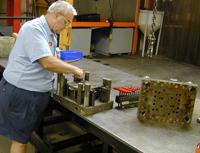
Figure 2: Experienced toolmakers at EBway provided the knowledge that helped to produce tooling that eliminates die roll on a customer’s stamped part. Photo courtesy of EBway Corp.
“In the past we would stamp the part from thicker material and add material to the thickness so we could remove the die roll by grinding it off,” he continued. “We thought we had to try a new approach to be competitive and had many conversations with the customer to learn how the part was used. Even though initially we were not sure how much we could reduce the die roll, we had a goal to reduce it as much as possible.”
Walker said that over a six-month period EBway engineers repeatedly analyzed how much material was pulled down before the actual cutting action of the punch. “It was laborious and at times frustrating work, but it resulted in a method to eliminate approximately 90 percent of the die roll around the holes,” he said.
As a result of this research, EBway was able to design and build a special stamping die (see Figure 2) that reduced the die roll to the customer’s satisfaction. The customer was then able to use the parts as stamped (see Figure 3), putting an end to secondary machining or grinding operations.
“Our customer was delighted with the results and the reduction in the cost of the part,” said Walker, noting as well that this technology is available for use on materials from 0.060 in. to 0.500 in. thick.
Walker added that this example is not only a success story, but also a template for the future.
“Companies are spending more time examining alternative manufacturing methods to reduce their cost and be competitive in the global market,” he said.
Sprocket to the Top
Innovation, of course, isn’t limited to the Sun Belt.
Triangle Manufacturing Co., Oshkosh, Wis., is a family-owned firm that provides parts and assemblies to the automotive, farm implement, packaging, HVAC, and retail display industries. According to the company‘s president, Brent Walker (who is not related to EBway’s Terry Walker), the business has put a premium on creative engineering, technical know-how, and adding value throughout its nearly 90-year history.
Be that as it may, the 45-person business clearly prizes those qualities now, maintaining a staff of eight engineers with a combined 157 years at Triangle and five toolmakers with a combined 140-plus years of toolmaking experience.
“This helps us provide full solutions, from design to implementation,” Triangle’s Walker said.
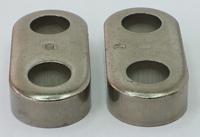
Figure 3: Die roll is typically evident in a part (left) after a punch pierces a hole. In this particular part, the web section is less than 50 percent of the material thickness, which caused additional die roll on the outside contour. EBway created a die that was able to eliminate that die roll in the metal part (right). Photo courtesy of EBway Corp.
To underscore that statement, he pointed to a sprocket bearing that his company recently created for a corn planting machine produced by a major agricultural equipment-maker. The metal part is involved in activating a mechanism that deposits the corn seeds during planting. Formed from eight different stamped steel components, the design drastically reduced the need for additional processing when assembling the final part.
With this part Triangle also was challenged to accommodate the bearing to a hexagonal shaft.
“We engineered a round shaft with a hexagonal inside that fit inside a round sleeve bearing. We used a flange mounting to act as a backplate to ensure sturdy mounting,” Walker said.
“This product can be used in many different chain-driven applications, with the possibility of many differently shaped shafts,” he added. “It can also be further customized and altered for the specifics in any industry.”
The benefits to the new system design are numerous.
“Our customer saved on assembly time. Because of the formed nature of the sheet metal, no additional welding was needed,” Walker said. “Also, we used no machined parts, and the only component not created through our stamping process was the sprocket’s oil-impregnated powdered metal bearing.”
Walker credited Triangle Manufacturing’s engineering and toolmaking capabilities with enabling this success story in a number of ways, some of which may not be immediately apparent. For instance, because the toolmaking is done on-site, the company can engineer and manufacture with no lag time, shipping products from its in-house shipping warehouse in a just-in-time (JIT) manner, Walker said.
Walker said JIT fits well with Triangle Manufacturing’s overall approach to business.
“What separates us from other fabricators and manufacturers is our understanding of OEM logistics and the part that can play in furthering quick turnaround and lowering part costs,” he said. “By shipping just-in-time, we reduce warehousing space. We have short lead-times and are able to maneuver shipping costs to be economical for our customers.”
As for Triangle Manufacturing, its strategy for the future revolves around continued innovation (see Figure 4).
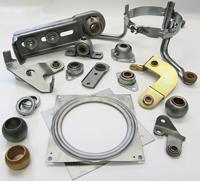
Figure 4: Stamping isn’t a method just for producing a large quantity of parts quickly and cost-effectively. Experienced toolmakers and engineers can turn the inside of a press bed into a place where innovative metal part designs can become a reality. Photo courtesy of Triangle Manufacturing Co.
“Along with many in the manufacturing industry, 2008 and 2009 were difficult years for sales,” Triangle’s Walker said. “Our vendors and customers were hit by the recession and production was down. However, we saw it as an opportunity to improve our internal efficiency in production and shipping. We are feeling much more confident about 2011 and are bolstering our sales with global expansion and new, innovative product development.”
The days of banging out thousands of simple parts on a stamping press may be gone for many metal formers, but plenty of stamping business remains for the companies able to use their expertise to resolve customers’ manufacturing dilemmas. This isn’t an easy way to make a living in manufacturing nowadays; it’s the only way.
About the Author
subscribe now

The Fabricator is North America's leading magazine for the metal forming and fabricating industry. The magazine delivers the news, technical articles, and case histories that enable fabricators to do their jobs more efficiently. The Fabricator has served the industry since 1970.
start your free subscription- Stay connected from anywhere

Easily access valuable industry resources now with full access to the digital edition of The Fabricator.

Easily access valuable industry resources now with full access to the digital edition of The Welder.

Easily access valuable industry resources now with full access to the digital edition of The Tube and Pipe Journal.
- Podcasting
- Podcast:
- The Fabricator Podcast
- Published:
- 04/16/2024
- Running Time:
- 63:29
In this episode of The Fabricator Podcast, Caleb Chamberlain, co-founder and CEO of OSH Cut, discusses his company’s...
- Industry Events
16th Annual Safety Conference
- April 30 - May 1, 2024
- Elgin,
Pipe and Tube Conference
- May 21 - 22, 2024
- Omaha, NE
World-Class Roll Forming Workshop
- June 5 - 6, 2024
- Louisville, KY
Advanced Laser Application Workshop
- June 25 - 27, 2024
- Novi, MI
























